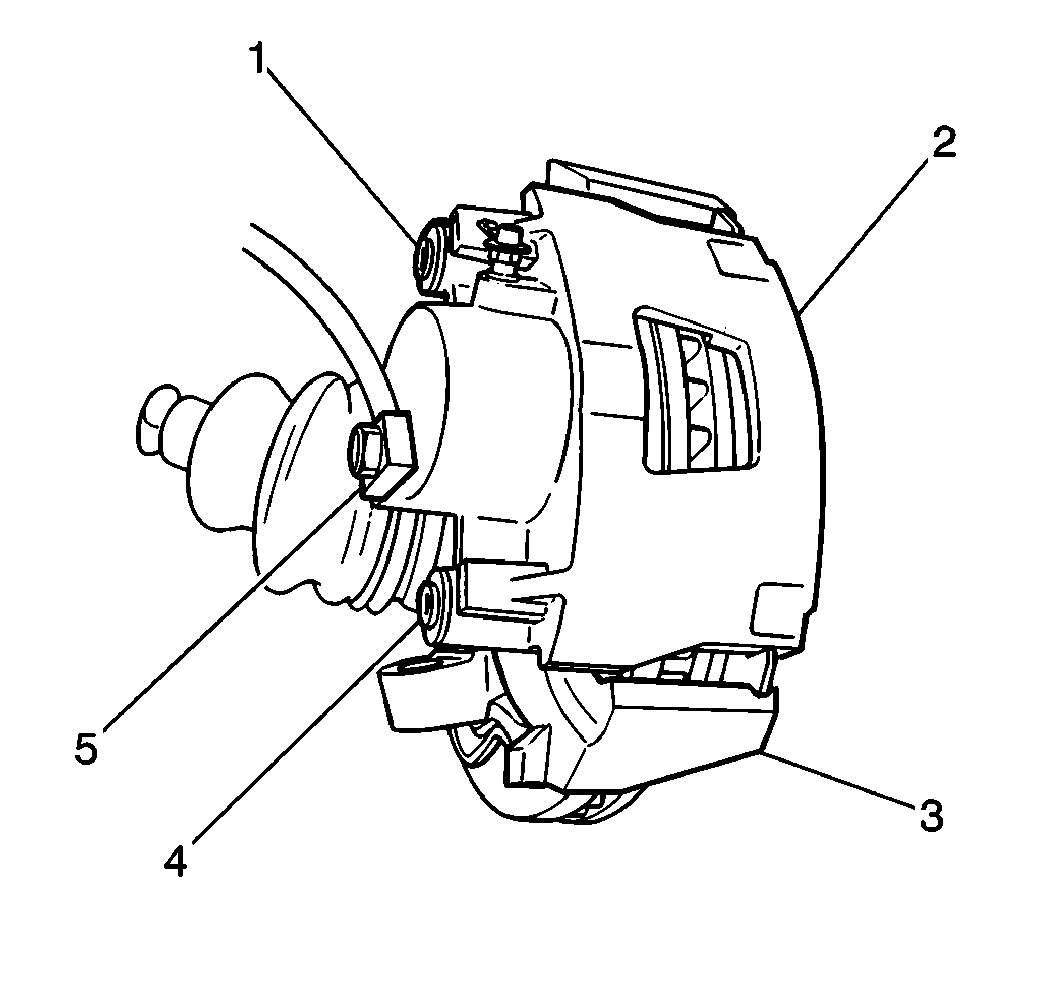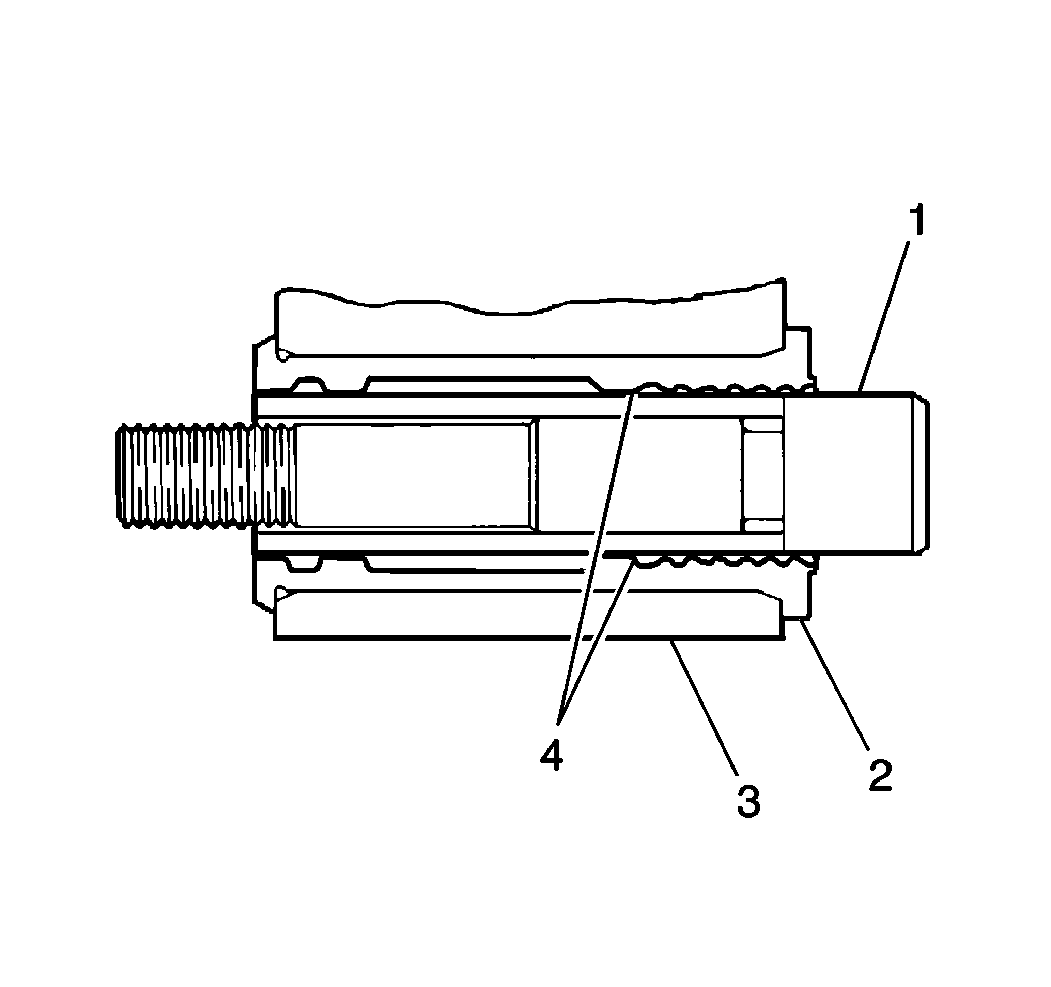Removal Procedure
- Remove 2/3 of the brake fluid from the master cylinder
assembly.
- Raise and support the vehicle. Refer to
Lifting and Jacking the Vehicle
in General Information.
- Mark the relationship of the wheel to the hub and bearing assembly
in order to ensure proper wheel balance upon reassembly.
- Remove the tire and wheel assembly. Refer to
Wheel Removal
in Tires and Wheels.
Reinstall 2 wheel nuts in order to retain the rotor to hub and
bearing assembly.

- Push the piston into the
caliper bore in order to provide clearance between the linings and the rotor.
- Install a large C-clamp over the top of the caliper housing and
against the back of the outboard shoe.
Slowly tighten the C-clamp until the piston is pushed into the caliper
bore enough in order to slide the caliper assembly off the rotor.

- Remove the bolt that attaches
the inlet fitting (5) only when the caliper (2) is removed
from the vehicle for unit repair (overhaul). If only the shoe and linings
are being replaced, you do not need to disconnect the inlet fitting (5).
Plug the exposed inlet fitting (5) in the caliper housing and
the brake hose in order to prevent fluid loss and contamination.
- Remove the caliper mounting bolts (1) and sleeve assemblies.

- Remove the caliper from
the rotor and knuckle.
| • | Do not let the caliper (2) hang from the brake hose. Damage
may occur. |
| • | If the caliper assembly is not being removed from the vehicle
for unit repair, suspend the caliper with a wire hook from the strut (1). |

- Inspect the mounting bolts (1)
and sleeve (4) assemblies for corrosion.
- Inspect the bushings (2) for cuts and nicks.
- If damage to either part is found, replace with new parts when
you install the caliper.
- Do no attempt to polish away corrosion.
Installation Procedure

- Liberally coat the inside
of the diameter of the bushings (4) with silicone grease (4).
- Install the mounting bolts (1) and the sleeve (4)
assemblies (1).

Notice: Use the correct fastener in the correct location. Replacement fasteners
must be the correct part number for that application. Fasteners requiring
replacement or fasteners requiring the use of thread locking compound or sealant
are identified in the service procedure. Do not use paints, lubricants, or
corrosion inhibitors on fasteners or fastener joint surfaces unless specified.
These coatings affect fastener torque and joint clamping force and may damage
the fastener. Use the correct tightening sequence and specifications when
installing fasteners in order to avoid damage to parts and systems.
- Install
the caliper (2) over the rotor into the knuckle.
Tighten
Tighten the mounting bolt and sleeve assemblies to 51 N·m
(38 lb ft).

- Install the inlet fitting,
if the inlet fitting was removed.
Tighten
Tighten the inlet fitting to 44 N·m (32 lb ft).
- Perform the following steps in order to install the wheel and
tire, aligning the previous marks:
| 5.1. | Remove the wheel nuts securing the rotor to the hub and bearing
assembly. |
| 5.2. | Install the wheel and tire assembly with the retaining nuts in
the proper sequence. Refer to
Wheel Installation
in Tires and Wheels. |
| 5.3. | Remove the safety stands. Lower the vehicle. |
- Fill the master cylinder to the proper level with clean brake
fluid. Refer to
Master Cylinder Reservoir Filling
in Hydraulic Brakes.
| 6.3. | Recheck the brake pedal feel. |







